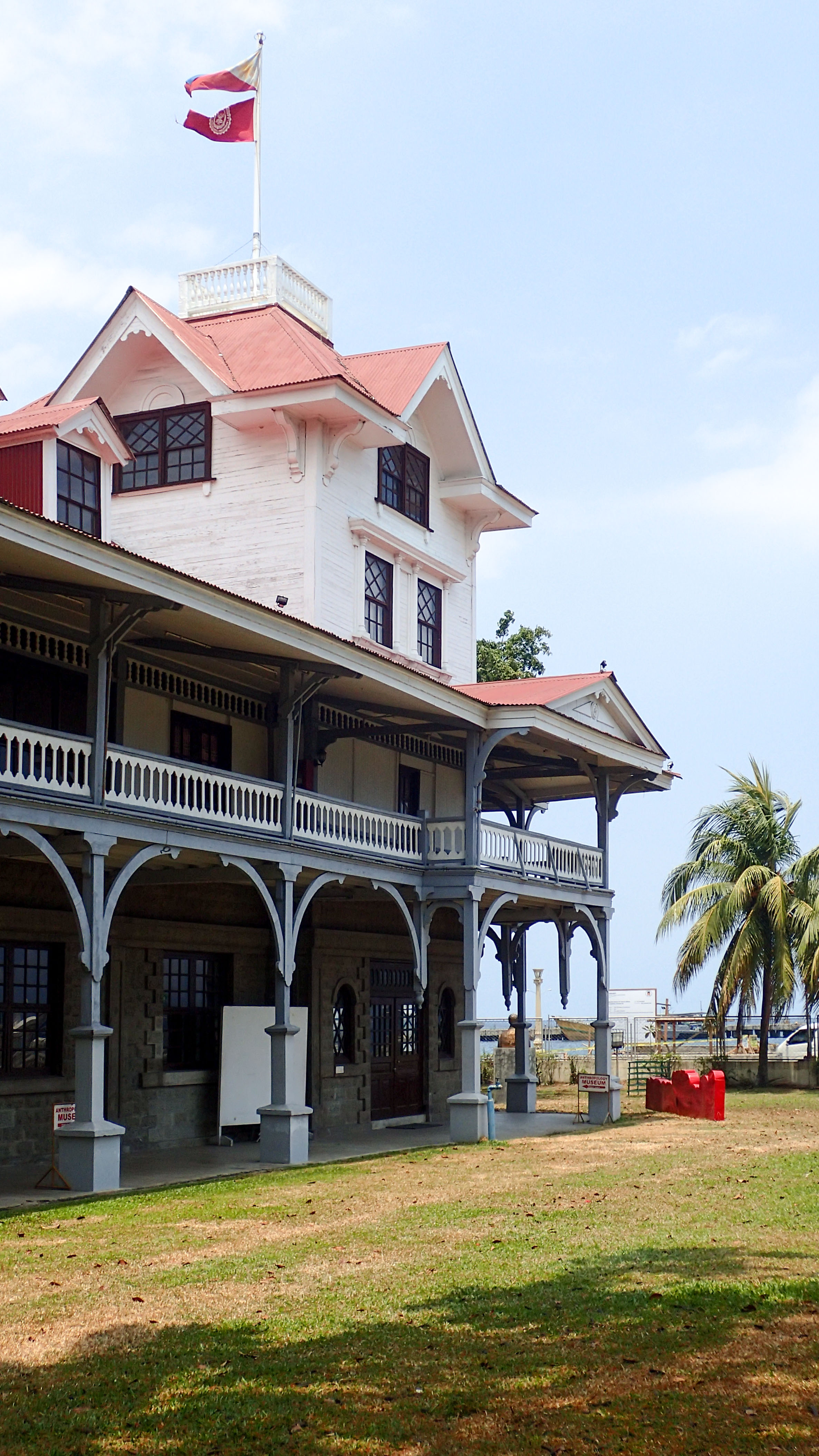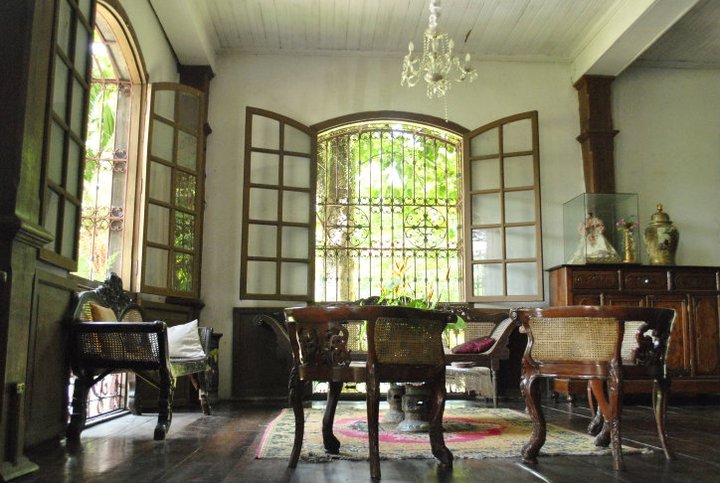|
Silliman Hall
The Silliman Hall is a building constructed in the Stick Style of American architecture in Dumaguete, Negros Oriental, Philippines. It was built in the early 1900s. It was converted to a museum in 1970. It is located in Dumaguete, Negros Oriental, Philippines. Exhibits The collections are divided into two categories and seven galleries. It includes artifacts from the indigenous Negritos and the Islamic period and as early as 200 BC. See also *Balay Negrense *The Ruins (mansion) *Hacienda Rosalia Hacienda Rosalia, also known as Hacienda Santa Rosalia, is a compound where the ancestral home mansion of Gaston family and the Church of Cartwheels are located. It is situated in Manapla, Negros Occidental, Philippines. The mansion was built in ... * Dizon-Ramos Museum * Museo Negrense de La Salle * Dr. Jose Corteza Locsin Ancestral house References {{Reflist *https://su.edu.ph/page/42-anthropology-museum *http://www.lakadpilipinas.com/2013/07/silliman-museum-dumaguete.html *ht ... [...More Info...] [...Related Items...] OR: [Wikipedia] [Google] [Baidu] |
Local Museum
A local museum or local history museum is a type of museum that shows the historical development of a place/region (local history) using exhibits. These museums usually maintain a collection of historic three-dimensional objects which are exhibited in displays. Such museums are often small in nature and generally have a low budget for their running costs. As such, many of the collections are compiled, cataloged, and interpreted by amateur historians as well as professionals. These museums can cover a governmental defined unit such as a town, city, county, or parish or they can cover an area defined within the museum's mission. In the United States while some museums may be part of the local government or receive funding from them in some way. However, most local history museums are usually self-funded. These museums can also run as independent organizations or they can managed by an accompanying local historical society which also will maintain an archive of local records in ... [...More Info...] [...Related Items...] OR: [Wikipedia] [Google] [Baidu] |
Balay Negrense
The Balay Negrense ( Hiligaynon for Negrense House), also as Victor Fernandez Gaston Ancestral House is a museum in Silay City, Negros Occidental in the Philippines, showcasing the lifestyle of a late 19th-century Negrense sugar baron. It is notable for being the first museum to be established in the province of Negros Occidental. History The Balay Negrense was originally the ancestral house of Victor F. Gaston, a son of Yves Leopold Germain Gaston and Prudencia Fernandez. The elder Gaston is credited as one of the pioneers of sugarcane cultivation in this portion of the Philippine archipelago. A native of Normandy in France, he married a Filipina from Batangas where he initially began experimenting with sugar production before relocating to Negros. Built in 1897, the house was constructed when Victor Gaston's wife died and during the time when he was residing in his father's hacienda, Hacienda Buen Retiro. The structure housed Victor Gaston and his twelve children from 1901 u ... [...More Info...] [...Related Items...] OR: [Wikipedia] [Google] [Baidu] |
Museums In The Philippines ...
This is a list of museums located in Philippines provinces in Luzon, Visayas, and Mindanao regions. Luzon Visayas Mindanao See also *List of museums *Tourism in the Philippines *Arts of the Philippines *Culture of the Philippines References {{Reflist Philippines Museums Museums Museums Philippines The Philippines (; fil, Pilipinas, links=no), officially the Republic of the Philippines ( fil, Republika ng Pilipinas, links=no), * bik, Republika kan Filipinas * ceb, Republika sa Pilipinas * cbk, República de Filipinas * hil, Republ ... [...More Info...] [...Related Items...] OR: [Wikipedia] [Google] [Baidu] |
Buildings And Structures In Dumaguete
A building, or edifice, is an enclosed structure with a roof and walls standing more or less permanently in one place, such as a house or factory (although there's also portable buildings). Buildings come in a variety of sizes, shapes, and functions, and have been adapted throughout history for a wide number of factors, from building materials available, to weather conditions, land prices, ground conditions, specific uses, prestige, and aesthetic reasons. To better understand the term ''building'' compare the list of nonbuilding structures. Buildings serve several societal needs – primarily as shelter from weather, security, living space, privacy, to store belongings, and to comfortably live and work. A building as a shelter represents a physical division of the human habitat (a place of comfort and safety) and the ''outside'' (a place that at times may be harsh and harmful). Ever since the first cave paintings, buildings have also become objects or canvasses of much artistic ... [...More Info...] [...Related Items...] OR: [Wikipedia] [Google] [Baidu] |
Museo Negrense De La Salle
The Museo Negrense de La Salle (lit: Negrense de La Salle Museum) is located within the campus of the University of St. La Salle in Bacolod, Philippines beside the St. La Salle Coliseum. It is the only school-based museum in the Negros region. History The museum was officially named Museo Negrense de La Salle in 1997. The Administration decided to fuse the University Research Institute with the repository and the addition of artifacts and relics donated by the Vega family under the care of Cecile Nava, PhD. Collections *The Ledesma Collection *The Vega Collection *The Esteban Collection *The Velayo-Javelosa Collection *The Puentevella Collectionhttp://asemus.museum/museum/museo-negrense-de-la-salle-philippines/ See also *Balay Negrense *The Ruins (mansion) *Hacienda Rosalia *Silliman Hall *Dizon-Ramos Museum The Dizon-Ramos Museum is situated in Bacolod, Negros Occidental, Philippines beside the Mariano Ramos Ancestral House. History The house was built in 1950s. It was ... [...More Info...] [...Related Items...] OR: [Wikipedia] [Google] [Baidu] |
Dizon-Ramos Museum
The Dizon-Ramos Museum is situated in Bacolod, Negros Occidental, Philippines beside the Mariano Ramos Ancestral House. History The house was built in 1950s. It was converted to a museum in 2007. It is located in Burgos Ave, Bacolod, Negros Occidental. Mariano Ramos Ancestral House The Mariano Ramos Ancestral House is the home of the late Mariano Ramos, first appointed Presidente Municipal of Bacolod City, Philippines. It was built in the 1930s and its architecture is a combination of Castilian and Tuscan and comprises three storeys including the tower room, known as the torre. It is beside the Dizon-ramos museum. Collections The collections are the old photographs, naff ceramics, glassware, jewelry, crystals, porcelain paintings and religious knick-knacks. See also *Balay Negrense *The Ruins (mansion) *Hacienda Rosalia *Silliman Hall The Silliman Hall is a building constructed in the Stick Style of American architecture in Dumaguete, Negros Oriental, Philippines. It wa ... [...More Info...] [...Related Items...] OR: [Wikipedia] [Google] [Baidu] |
Hacienda Rosalia
Hacienda Rosalia, also known as Hacienda Santa Rosalia, is a compound where the ancestral home mansion of Gaston family and the Church of Cartwheels are located. It is situated in Manapla, Negros Occidental, Philippines. The mansion was built in 1930s. History Hacienda Santa Rosalia is a sugar plantation owned by Jose Gaston, one of the sons of Victor Gaston, a sugar planter of Negros. He was married to Consuelo Azcona and had 8 children. The Gaston Mansion was built in the 1930s. It is set in lush, verdant and gorgeous garden of flowers, shrubs, trees, potted palms and herbs. Within the grounds are a fresh water swimming pool (used as hiding place during World War II), a Victorian fountain, a basketball court, a windmill, and a time-worn shoe house (which was used before as a playground). The Chapel of the Cartwheels is also situated a few meters away from the ancestral home. The Gaston family originated from the Frenchman Yves Leopold Germain Gaston. He is credited as the first ... [...More Info...] [...Related Items...] OR: [Wikipedia] [Google] [Baidu] |
The Ruins (mansion)
The Ruins is the remains of the ancestral home mansion of the family of Don Mariano Ledesma Lacson and Maria Braga Lacson. It is situated in Talisay, Negros Occidental, Philippines. The mansion was built in early 1900s and inspired by Italian architecture."The ruin of Talisay" "The Ruins - Taj Mahal of Negros" [...More Info...] [...Related Items...] OR: [Wikipedia] [Google] [Baidu] |
Negrito
The term Negrito () refers to several diverse ethnic groups who inhabit isolated parts of Southeast Asia and the Andaman Islands. Populations often described as Negrito include: the Andamanese peoples (including the Great Andamanese, the Onge, the Jarawa, and the Sentinelese) of the Andaman Islands, the Semang peoples (among them, the Batek people) of Peninsular Malaysia, the Maniq people of Southern Thailand, as well as the Aeta of Luzon Island, Ati, and Tumandok of Panay Island, Agta of Sierra Madre and Mamanwa of Mindanao Island and about 30 other officially recognized ethnic groups in the Philippines. Etymology The word ''Negrito'' is the Spanish diminutive of ''negro'', used to mean "little black person." This usage was coined by 16th-century Spanish missionaries operating in the Philippines, and was borrowed by other European travellers and colonialists across Austronesia to label various peoples perceived as sharing relatively small physical stature and dark skin. Cont ... [...More Info...] [...Related Items...] OR: [Wikipedia] [Google] [Baidu] |
Dumaguete
Dumaguete, officially the City of Dumaguete ( ceb, Dakbayan sa Dumaguete; fil, Lungsod ng Dumaguete), is a 3rd income class component city and the capital of the province of Negros Oriental, Philippines. According to the 2020 census, it has a population of 134,103 people. It is the smallest in terms of land area yet the most populous among the cities and municipalities in the province of Negros Oriental. Dumaguete is a university city, with four large universities and a number of other colleges, attracting students of the province, as well as students of surrounding provinces and cities in Visayas and Mindanao. The city is best known for Silliman University, the first Protestant and American university in the country and in Asia. There are also 18 public elementary schools and 8 public high schools. The power source of the city comes from the geothermal power plant in Palinpinon, Valencia. Scholars have been pushing for the city's inclusion in the tentative list of the Phili ... [...More Info...] [...Related Items...] OR: [Wikipedia] [Google] [Baidu] |
Silliman University Silliman Hall
Silliman is a surname. Notable people with the surname include: * Aldine Silliman Kieffer (1840–1904), American musician * Benjamin Silliman (1779–1864), American chemist * Benjamin Silliman Jr. (1816–1885), American chemist *Benjamin D. Silliman (1805–1901), American lawyer and politician * Gold Selleck Silliman (1732–1790), American attorney and Revolutionary War figure * Horace Brinsmade Silliman (1825-1910), founder of Silliman University * Jael Silliman, American writer * Randolph Silliman Bourne (1886–1918), American writer * Robert Hillyer aka Robert Silliman Hillyer (1895–1961), American poet * Ron Silliman (born 1946), American poet See also * Silliman College at Yale University * Silliman University, Dumaguete City, Philippines * USC&GS Silliman See also * Sillimanite Sillimanite is an aluminosilicate mineral with the chemical formula Al2SiO5. Sillimanite is named after the American chemist Benjamin Silliman (1779–1864). It was first described in 1824 ... [...More Info...] [...Related Items...] OR: [Wikipedia] [Google] [Baidu] |






.jpg)
